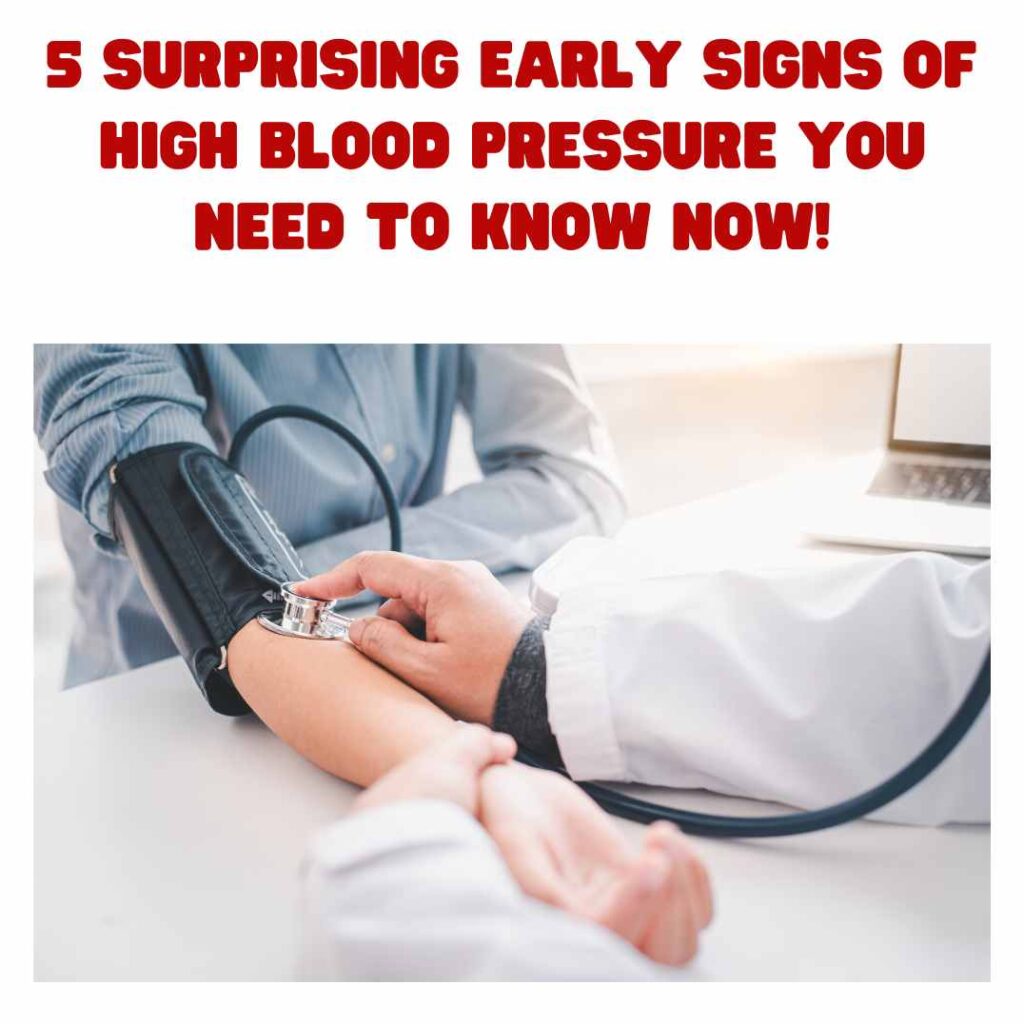High blood pressure, also known as hypertension, is a common health condition. It can lead to serious problems if not managed properly. Early detection is crucial. Let’s explore the five early symptoms of high blood pressure.
What is High Blood Pressure?
High blood pressure happens when the force of blood against your artery walls is too high. It can cause health issues like heart disease and stroke. Monitoring and managing your blood pressure is vital for maintaining good health.
Why Early Detection is Important
Early detection of high blood pressure can prevent severe health problems. Many people don’t realize they have high blood pressure because it often has no symptoms. Knowing the early signs can help you seek medical advice and take action.
Symptom 1: Headaches
Frequent Headaches
One of the earliest signs of high blood pressure is frequent headaches. These headaches are usually dull and persistent. They may occur in the mornings and feel like a pressure or throbbing pain.
Why it Happens
High blood pressure increases the pressure in your blood vessels. This can affect the blood flow to your brain, causing headaches. If you notice frequent headaches, it’s essential to check your blood pressure.
Symptom 2: Dizziness
Feeling Lightheaded
Dizziness or lightheadedness can be an early sign of high blood pressure. You might feel unsteady, faint, or like the room is spinning. This can happen suddenly and may be alarming.
Why it Happens
High blood pressure can reduce the flow of blood to your brain, leading to dizziness. If you experience unexplained dizziness, it’s a good idea to monitor your blood pressure.
Symptom 3: Blurred Vision
Vision Changes
Blurred vision or other vision changes can indicate high blood pressure. You might find it hard to focus or see clearly. This symptom should not be ignored, especially if it occurs suddenly.
Why it Happens
High blood pressure can damage the blood vessels in your eyes. This can lead to vision problems. Regular eye check-ups and blood pressure monitoring can help detect issues early.
Symptom 4: Shortness of Breath

Difficulty Breathing
Feeling short of breath or having difficulty breathing can be a sign of high blood pressure. You might feel out of breath even after mild physical activity or while resting.
Why it Happens
High blood pressure can strain your heart and lungs, making it hard for them to function properly. This can cause shortness of breath. If you notice this symptom, consult your doctor immediately.
Symptom 5: Nosebleeds
Frequent Nosebleeds
Frequent or unexplained nosebleeds can be an early symptom of high blood pressure. While occasional nosebleeds are common, frequent ones may indicate an underlying issue.
Why it Happens
High blood pressure can damage the blood vessels in your nose, making them more likely to bleed. If you experience frequent nosebleeds, it’s important to check your blood pressure.
How to Monitor Your Blood Pressure
Home Monitoring
Monitoring your blood pressure at home is simple and effective. Use a digital blood pressure monitor to check your levels regularly. Keep a record of your readings and share them with your doctor.
Regular Check-ups
Regular check-ups with your doctor are essential. They can help detect high blood pressure early and recommend appropriate treatment. Don’t skip your appointments, even if you feel fine.
Lifestyle Changes to Manage High Blood Pressure
Healthy Diet
Eating a healthy diet can help manage high blood pressure. Focus on fruits, vegetables, whole grains, and lean proteins. Reduce your intake of salt, sugar, and saturated fats.
Regular Exercise
Regular physical activity can lower your blood pressure. Aim for at least 30 minutes of moderate exercise, like walking or cycling, most days of the week. Consult your doctor before starting any new exercise program.
Stress Management
Managing stress is crucial for maintaining healthy blood pressure. Practice relaxation techniques like deep breathing, meditation, or yoga. Find activities that help you relax and unwind.
Limit Alcohol and Quit Smoking
Limiting alcohol intake and quitting smoking can significantly improve your blood pressure. If you need help, seek support from your doctor or join a support group.
When to Seek Medical Help
Persistent Symptoms
If you experience persistent symptoms like headaches, dizziness, blurred vision, shortness of breath, or frequent nosebleeds, seek medical help immediately. Early intervention can prevent serious health complications.
Emergency Situations
In case of severe symptoms like chest pain, severe headache, difficulty breathing, or sudden vision loss, seek emergency medical help. These could be signs of a hypertensive crisis, which requires immediate attention.
More articles, CLICK HERE
Conclusion
High blood pressure is a silent threat that can lead to serious health issues. Recognizing the early symptoms is crucial for early intervention and management. Frequent headaches, dizziness, blurred vision, shortness of breath, and nosebleeds are some early signs to watch out for.
By monitoring your blood pressure regularly, making healthy lifestyle changes, and seeking medical advice when needed, you can manage high blood pressure effectively. Stay informed and proactive about your health to prevent complications and lead a healthier life.

















What do you think?
It is nice to know your opinion. Leave a comment.